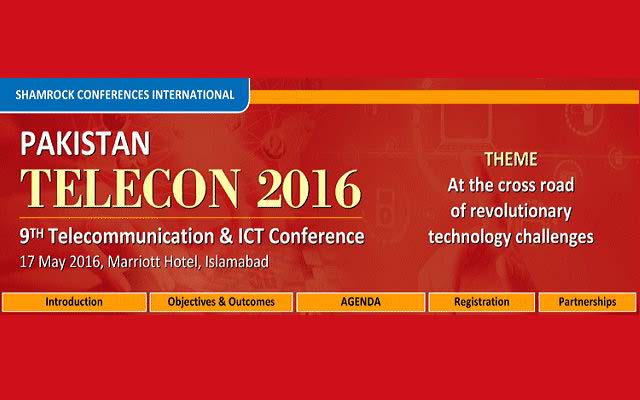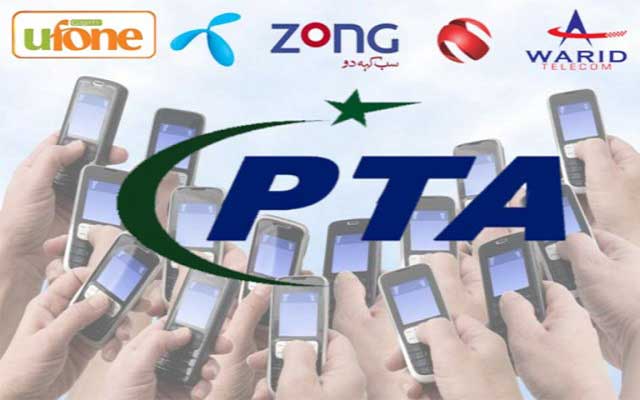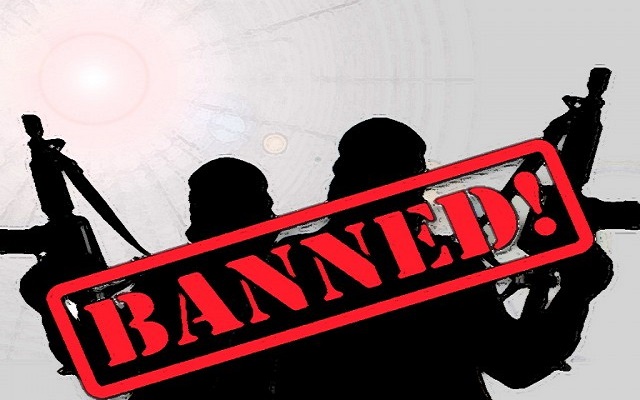The Regulator of Tomorrow: How & Why to reform PTA?

The role of IT and telecom has expanded way beyond the dominion of ICT sector; today health, education, transportation, governance, agriculture, entertainment industry etc are heavily reliant on technology. ICT is ensuring economic stability, national security, and facilitation for social interaction within nations as well as between nations.
Artificial intelligence, smart technology, robotics, AR, VR, drones, and use of other such technologies have changed how things were dealt with in the past. This complexity and fast pace technology changes have made the role of regulators even more important.
Policy makers are forced to respond with better and improved regulatory frameworks in order to foster both innovation and fairness. Typically, a telecom regulator performs three major functions.
Market efficiency:
The first and foremost responsibility of any telecom regulator is to ensure the sustainability of the industry by promoting fair competition and efficiency of industry players.
Regulator tries to creating an enabling environment for the businesses through friendly policies and strong support system so that business could flourish and FDI increases.
Scarcity Management:
Spectrum is the central commodity to ensure smooth flow of ICT services but unfortunately, it is a scarce resource that requires careful management. Given the growth of the mobile market, the spectrum continues to be a scarce national commodity. Spectrum management revolves around two key questions; how much spectrum should be released and how can the government control the use of that spectrum? The telecom regulator keenly focuses on current and future spectrum needs of the country and then decides how much spectrum it needs to release at a certain time.
Safeguard of customer welfare:
Protection of consumer rights is one of the key responsibilities of a telecom regulator. It makes sure that best quality services are provided while safeguarding consumer welfare.
Now with the telecom world changing, the ingenuity of the digital world has become quite unpredictable. New services, applications, and technology are stimulating the market in an entirely different way. The role of telecom regulator has expanded way beyond its conventional role. Competition has become fiercer, new technologies are introduced every now and then, 3G, 4G, 5G evolution has paced up, new players in telecom and IT business are entering the scene while mergers and acquisitions are also taking place.
to ensure that equitable environment is provided to telecom and needs of consumers and other stakeholders are met, it is essential for regulators to understand current regulatory issues and approaches for dealing with those issues.
Therefore, constant re-evaluation of regulatory policies is very important. But unfortunately some regulators are not able to perform these roles successfully. For example in India the telecom regulations are extremely strict that make the survival of operators quite impossible. It was because of these harsh regulations that Telenor moved out of Indian market few years ago. The Indian government despite the pleas of operators releases spectrum in very small chunks to make more money. Although it does manage to secure small monetary gains but this move drastically impacts the industry players and consequently the general consumers. Similarly, Pakistan has also been unsuccessful in attracting any new player in the market due to its weak and outdated policies and unfriendly environment.
ICT is one of the biggest industries of Pakistan right now with numerous stakeholders who are working tirelessly to realize the dream of digital Pakistan. The investment and innovation from private sector has played an important role in the ICT boom of the country. There are number of companies that are now working in Pakistan, bringing new technology every now and then. Thus, the job of Pakistan Telecommunication authority (PTA) is becoming more and more complex which requires the regulator to stay up-to-date with all the latest developments. So, the important thing to consider is that how well-prepared PTA is to keep-up with this dynamic environment?
The growth and progress created through digitization has resulted in price cut down of digital services, mobile revolution and more connected internet users even in remote areas. While this digital convergence has benefited consumers and industry in a great way, it has also created challenges for the regulators. For example, the complexity of digital ecosystem markets has heightened regulatory uncertainty while the rapid pace of change makes regulations obsolete quickly. Policy makers all over the world have recognized these challenges and are working to introduce reforms that will benefit consumers and protect competition without impeding the socio-economic growth. PTA has also improved profoundly over the years and made lot of improvements in its infrastructure and policies. Last few years have been the golden years for our industry in which we achieved a number of milestones. Introduction of NGMS, telecom policy, cyber-crime bill are some of the most notable initiative taken by MoITT and PTA.
Despite giving a great performance over the last few years PTA is still facing some serious challenges that are slowing down the overall growth.
Few of those major challenges are as follow:
Bureaucracy:
Like every other government organization, PTA also has a bureaucratic system. Although bureaucratic model of management is very democratic in nature in which well-structured organizations follow strict rules and regulations and keep check and balance on the employees. But since it is an old and rigid system, it slows down the decision making process hence resulting in loss of opportunity. IT and Telecom industry which is evolving at a very fast pace cannot afford to be decelerated in any manner.
The ever-changing and technologically advanced industry on which all other industries are reliant require an innovative environment that is flexible and up-to-date, something an old bureaucratic system cannot provide.
Therefore, PTA needs to restructure its organization in a way that is adaptable to changing environment and makes timely decisions when and where required.
Outdated Procurement Rules:
In order to modernize itself, PTA not only needs structural changes but it also requires policy changes as well. Public Procurement Regulatory Authority is a autonomous body responsible for prescribing regulations and procedures for public procurements by Federal Government owned public sector organizations with a view to improve governance, management, transparency, accountability and quality of public procurement of goods, works and services still works under Ordinance of 2002. The competition Commission of Pakistan was established under the ordinance or 2007 while FAB is also following the policies and guidelines that were set in early 2000.
The time when we need robust and forward-looking policies our telecom and IT organizations are running on decade-old regulations which is the biggest hindrance in industry’s and PTA’s growth.
In fervently changing environment, it is highly important for the regulator to keep up with these changes by continuously updating policies and regulations. Unfortunately PTA has not been able to maintain the same pace. We lack policies and regulations at many fronts. For example we are still unsure about how to handle the growing online services, IoTs, drones, Artificial Intelligences, 3D printing, Augmented Reality etc. so what is needed from PTA right now is to do a comprehensive research and analysis of latest tech trends and then design policies and regulations accordingly.
Top Heavy oversight & Outside Interference:
Despite being an autonomous organization, PTA is not entirely free to take its decisions. For taxation, PTA has to work together with FBR, for cybercrime, gray market and other such issues PTA is reliant on FIA and other security agencies while spectrum management comes under the jurisdiction of FAB. And most importantly, PTA has to look up to MoITT before taking up every decision.
In order to work towards the betterment of the industry and PTA itself, it is very important to free PTA from influences of these other organizations. Unless and until PTA is free to take its decisions on its own, it won’t be able to perform up to its truest potential.
PTA should be given the upper hand in developing all such policies so that industry could move in the right direction and apprehensions of all stakeholders could be removed in appropriate and timely manner.
Lack of initiatives & innovation :
Since PTA is a government organization, it is heavily influenced by the political institution.
Every time a new government is formed in the country, it tries to bring its own people in all government organizations.
Offering government jobs to their supporters is sort of a reward method used by many politicians. By doing this they compensate their loyal supporters but in the process seriously damage the government institutions by hiring wrong people. Nepotism is a common practice in PTA as well. There are number of under qualified personnel appointed on the key posts who lack the will and ways to be an active part of a supposedly progressive organization but since they managed to build strong relations with their seniors through fawning and flattery, they enjoy a better position in the organization.
What needs to be done?
With continued advances in technology, regulators are facing growing challenges in developing and enforcing rules that protect citizens, encourage innovation and ensure fair markets. But realizing this vision can’t happen overnight. It requires investment of financial resources, political capital to develop these capabilities, reengineer processes, and transform cultures to make the best use of them.
The most important thing here is to develop a detailed and comprehensive strategy to develop a modernized technology-enabled regulatory authority and then to launch pilots, experiment, learn, and then scale what works throughout the organization.
Few months ago Pakistan Tehreek-e-Insaaf took over the government which is very forward-looking and progressive in its approach to run the country affairs. So we can expect that in the coming time we might see some major changes in the government setup including in MoITT and PTA.
Although the minister it appointed for MoITT raised many eyebrows due to his non-IT background but since PTI envisions creating a digital Pakistan, we can assume that positive steps will be taken in this direction.
In the previous government, PITB reached the new heights of success under the leadership of Dr. Umer Saif, a lot of growth was also witnessed in KPK province. We need similar kind of motivated and energetic people in PTA as well who are willing to take the initiatives and lead the authority from the front.
PTA Taxes Portal
Find PTA Taxes on All Phones on a Single Page using the PhoneWorld PTA Taxes Portal
Explore NowFollow us on Google News!





